Photos: Aerial Views of Ancient Stone Structures in Saudi Arabia
Saudi Arabia from Above
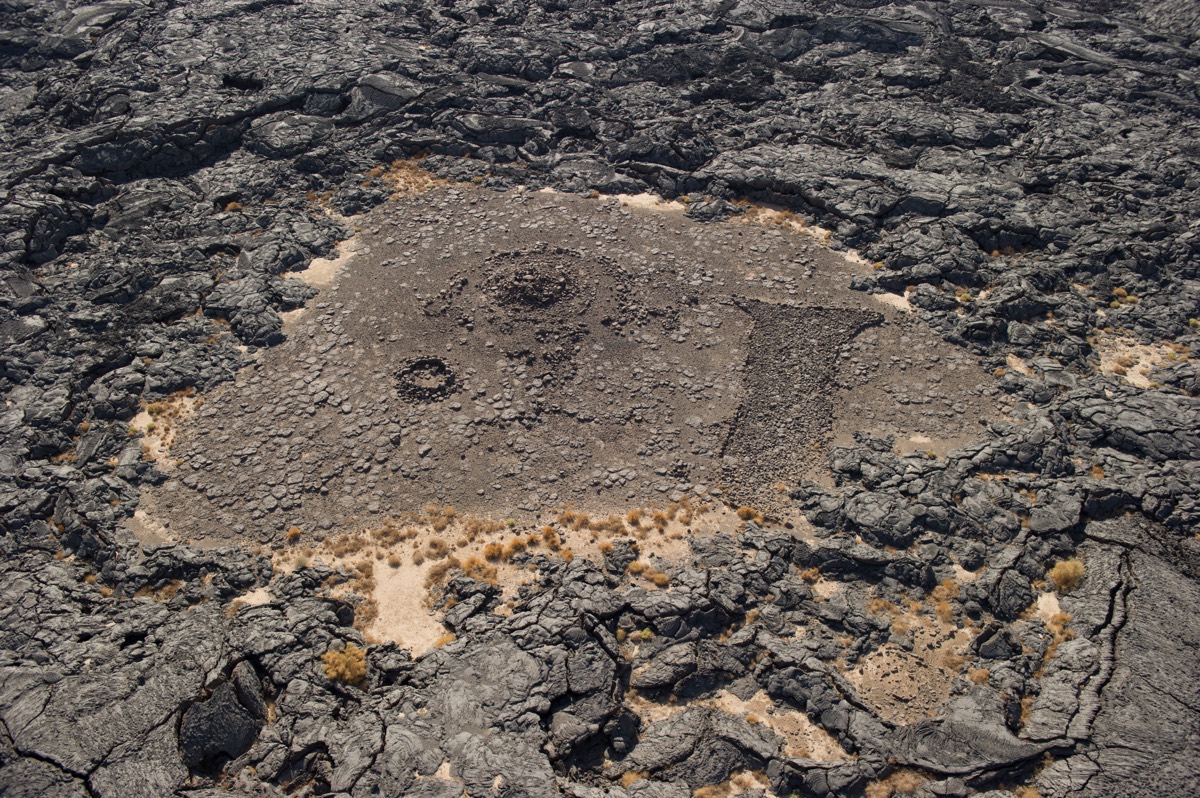
Between Oct. 27 and Oct. 29, 2017, an archaeological team took nearly 6,000 photographs of ancient stone structures and other types of archaeological sites in Saudi Arabia. In this photo gallery, Live Science takes a look at a batch of newly released photos.
In Flight
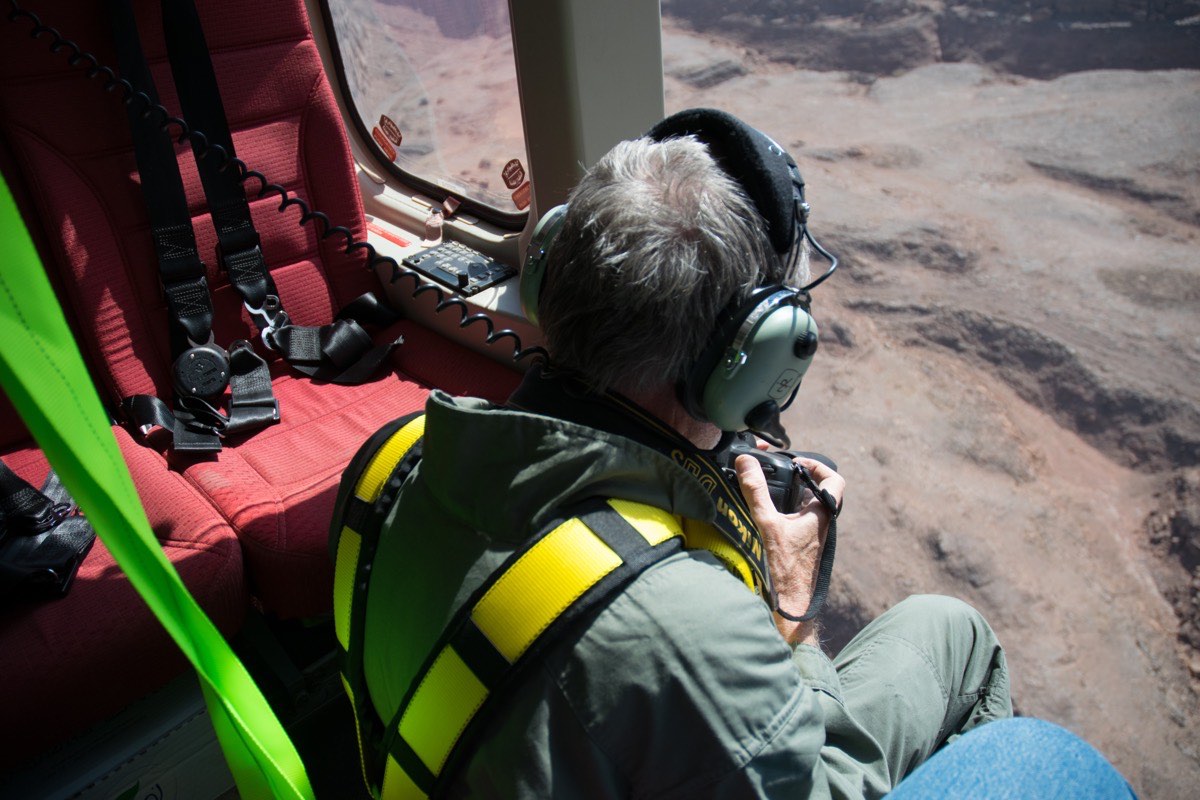
Here, archaeologist David Kennedy, who founded the Aerial Photographic Archive for Archaeology in the Middle East (APAAME) in 1978, can be seen taking pictures from a helicopter of various structures below.
White peaks
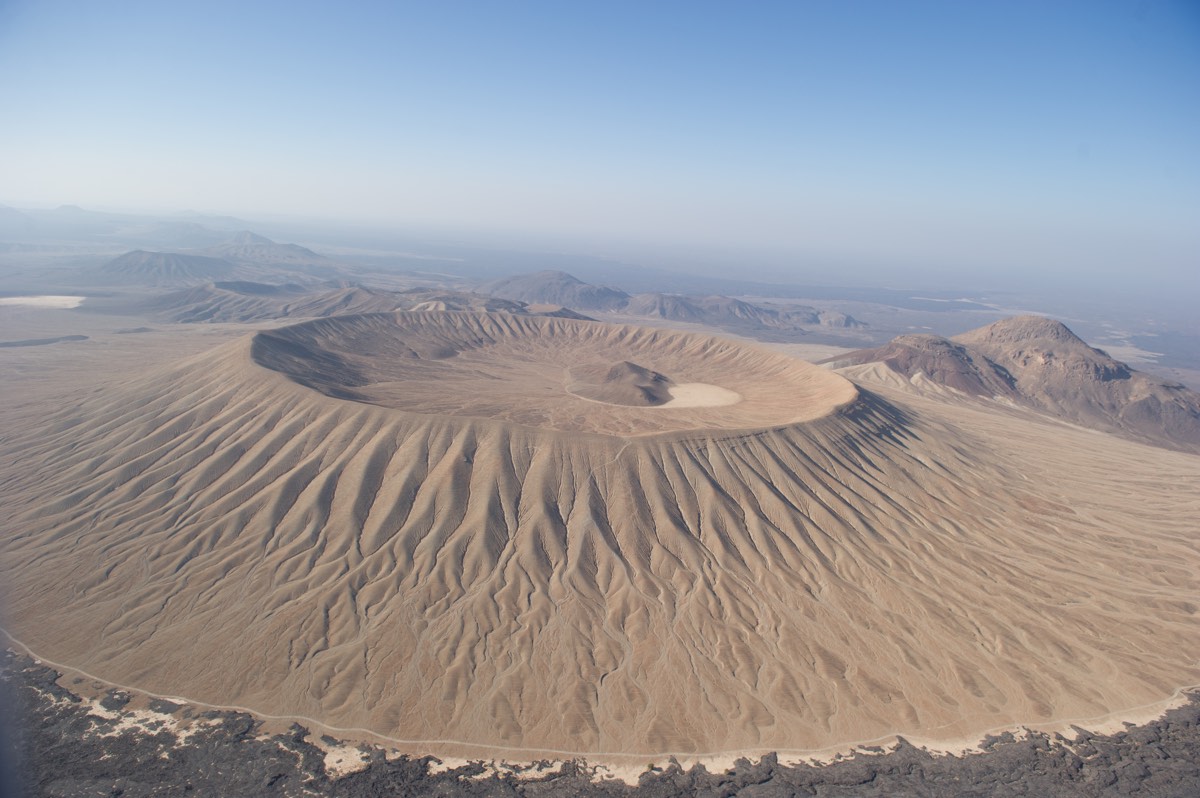
In addition to providing a vast amount of new information on the region's mysterious stone structures, the nearly 6000 photographs also reveal the region's stunning geology and landscape. This image shows two white volcanic peaks, known as Jabal Bayda and Jabal Abyad, respectively. The two peaks contrast "sharply with the dense blackness of the neighboring peaks and the surrounding lava field," archaeologist David Kennedy noted.
Pendant-shaped structure
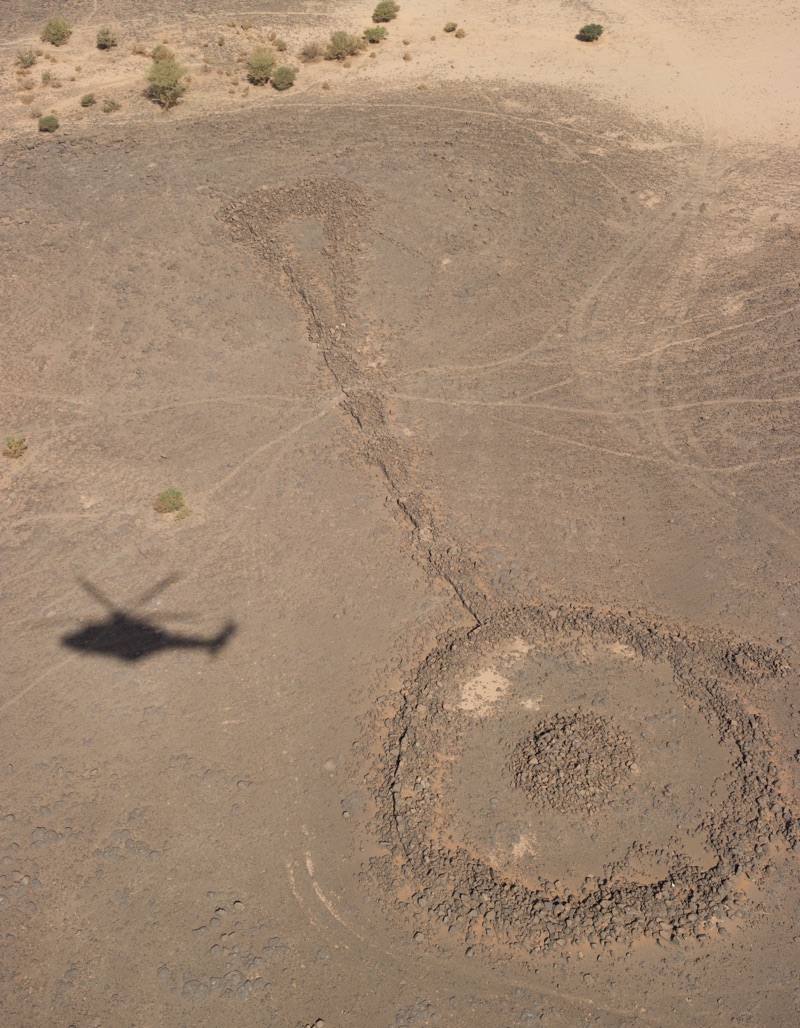
This stone structure, which archaeologists call a pendant, due to its shape, can be seen on Google Earth and is about 328 feet (100 meters) long and has a cairn that is about 82 feet (25 m) in diameter. The aerial photo reveals that the connecting wall between the pendant's bullseye (the circle with the cairn in the middle) and triangle is, in fact, a series of rectangular platforms. The aerial photo also reveals that the triangle, platforms and bullseye are carefully built with coursed stones.
Keyhole pendants
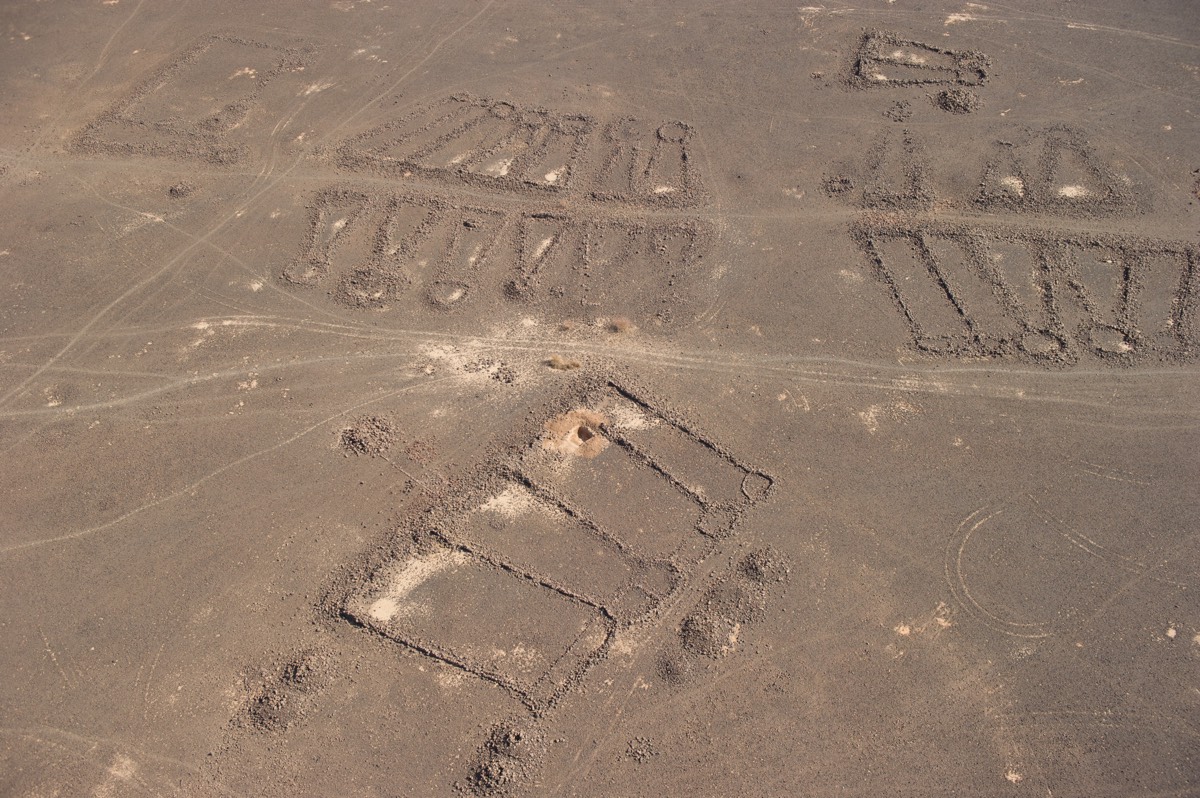
A dozen keyhole pendants, so named after their shape, can be seen in this photograph, along with several associated structures whose shapes appear more rectangular. These rectangular-looking structures may offer clues to how these keyhole pendants were created long ago.
Gates amidst lava

The flight brought Kennedy above a cairn and part of a mysterious rectangular structure that archaeologists call a gate, so named after its vague resemblance to an old-fashioned field gate. The structures can be seen amidst the remains of a lava flow. The flow covers part of the gate, indicating that the gate is older than the flow. If researchers can date the flow, it will provide information on the gate's age.
Stone kites
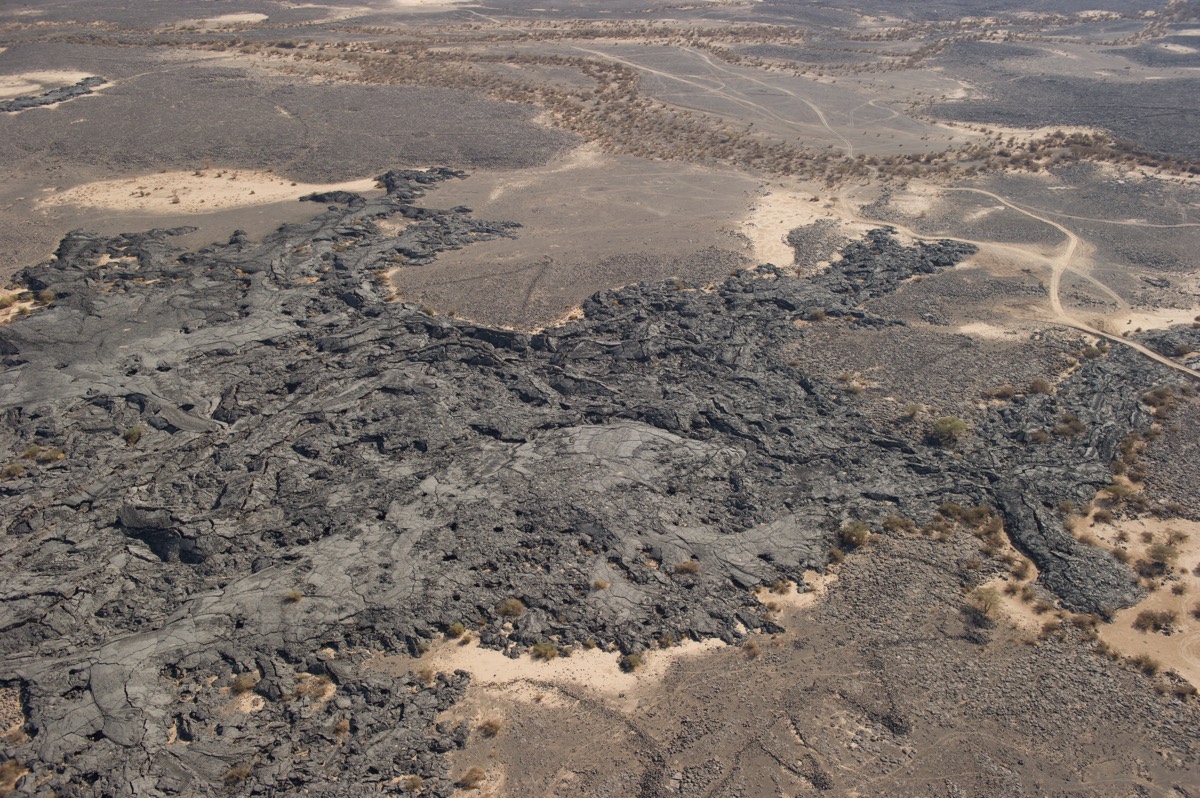
The stone structures in Saudi Arabia also took the shape of kites, as can be seen here. Archaeologists generally believe that kites were used to hunt and kill animals. The kite is partly covered by the remains of a lava flow, indicating that the kite is older than the lava flow.
I-Shaped Gates
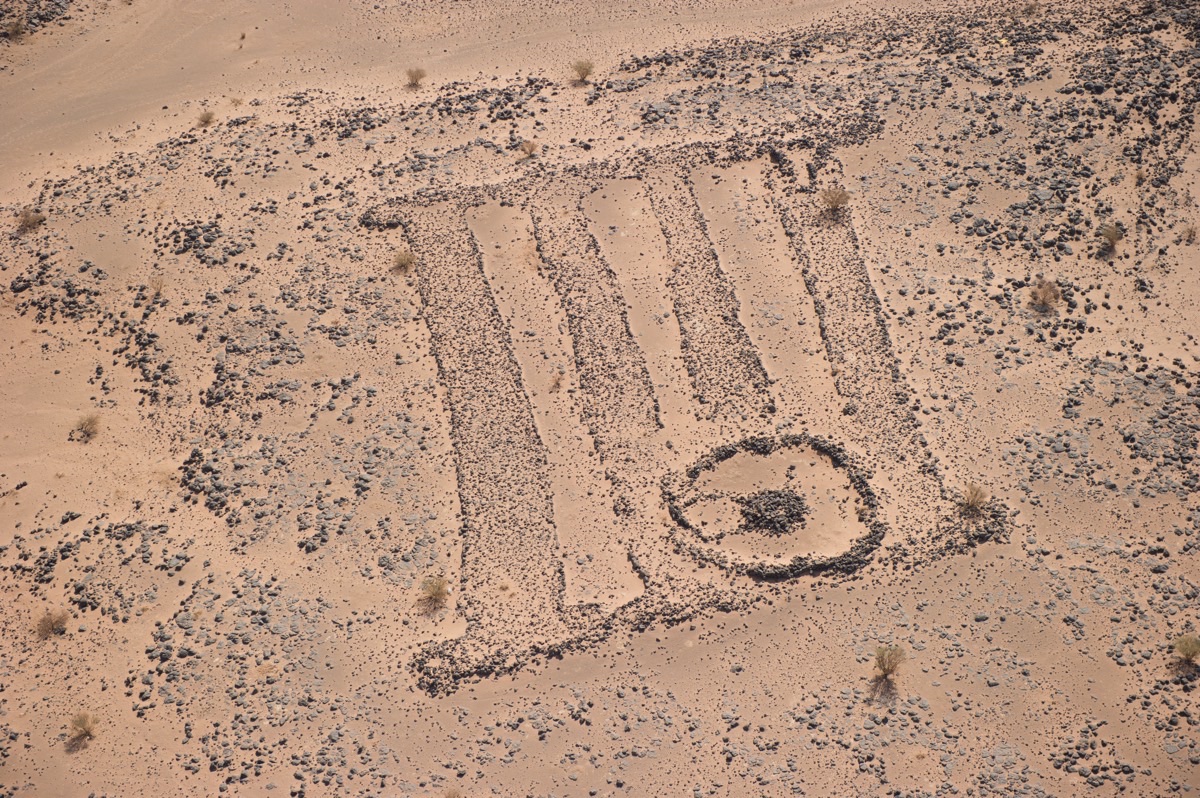
Four I-type gates, as archaeologists call them, can be seen in this photo. Each is 213 feet (65 meters) long and is shaped like the letter "I." A so-called bullseye cairn lies above the gates (in the photo). The aerial photograph shows how the ancient builders carefully outlined the shapes of the four gates, putting stones within them.
Saudi Fieldwork
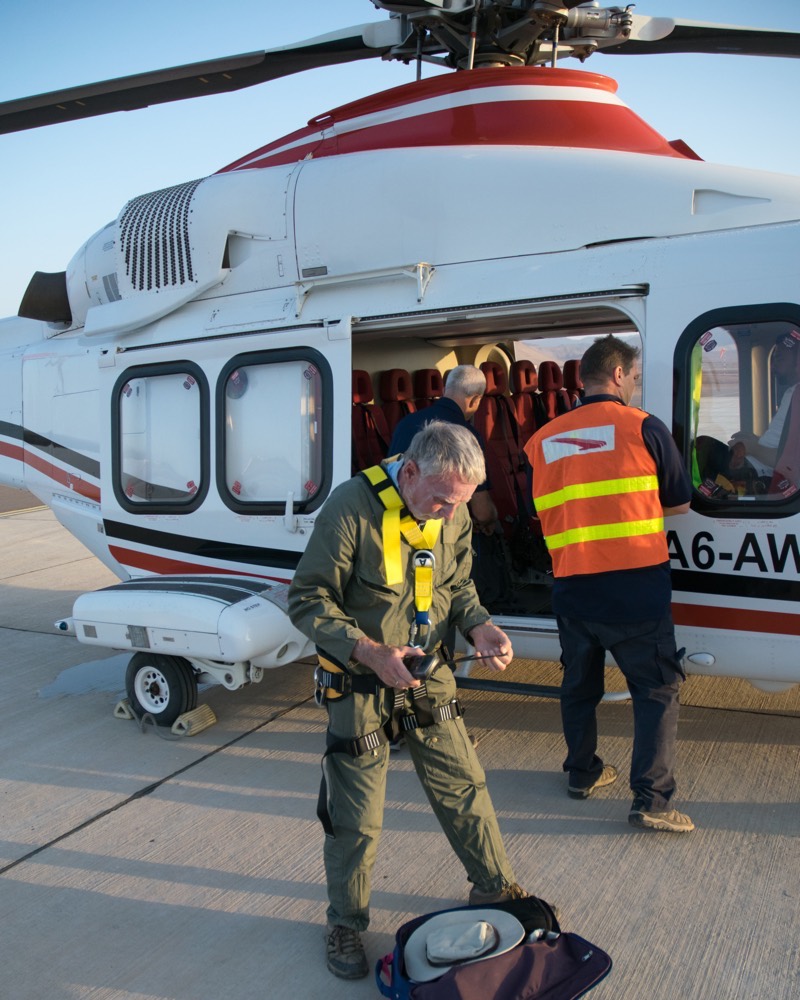
Archaeologists are currently studying the nearly 6,000 photos. To help solve the many mysteries these stone structures pose, actual fieldwork is needed. In this photo, David Kennedy prepares for flight at Al Ula in Saudi Arabia.
Sign up for the Live Science daily newsletter now
Get the world’s most fascinating discoveries delivered straight to your inbox.

Owen Jarus is a regular contributor to Live Science who writes about archaeology and humans' past. He has also written for The Independent (UK), The Canadian Press (CP) and The Associated Press (AP), among others. Owen has a bachelor of arts degree from the University of Toronto and a journalism degree from Ryerson University.










